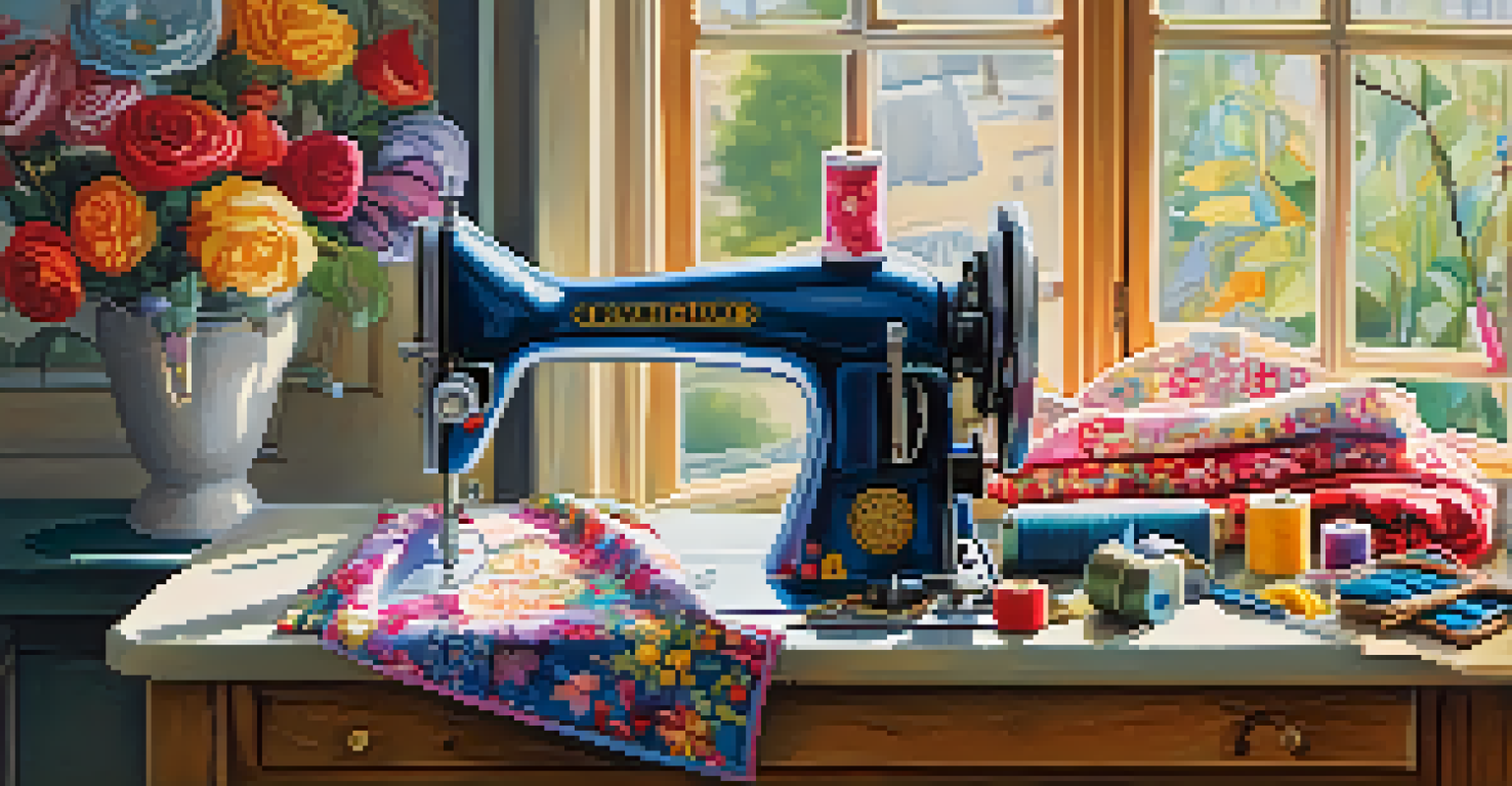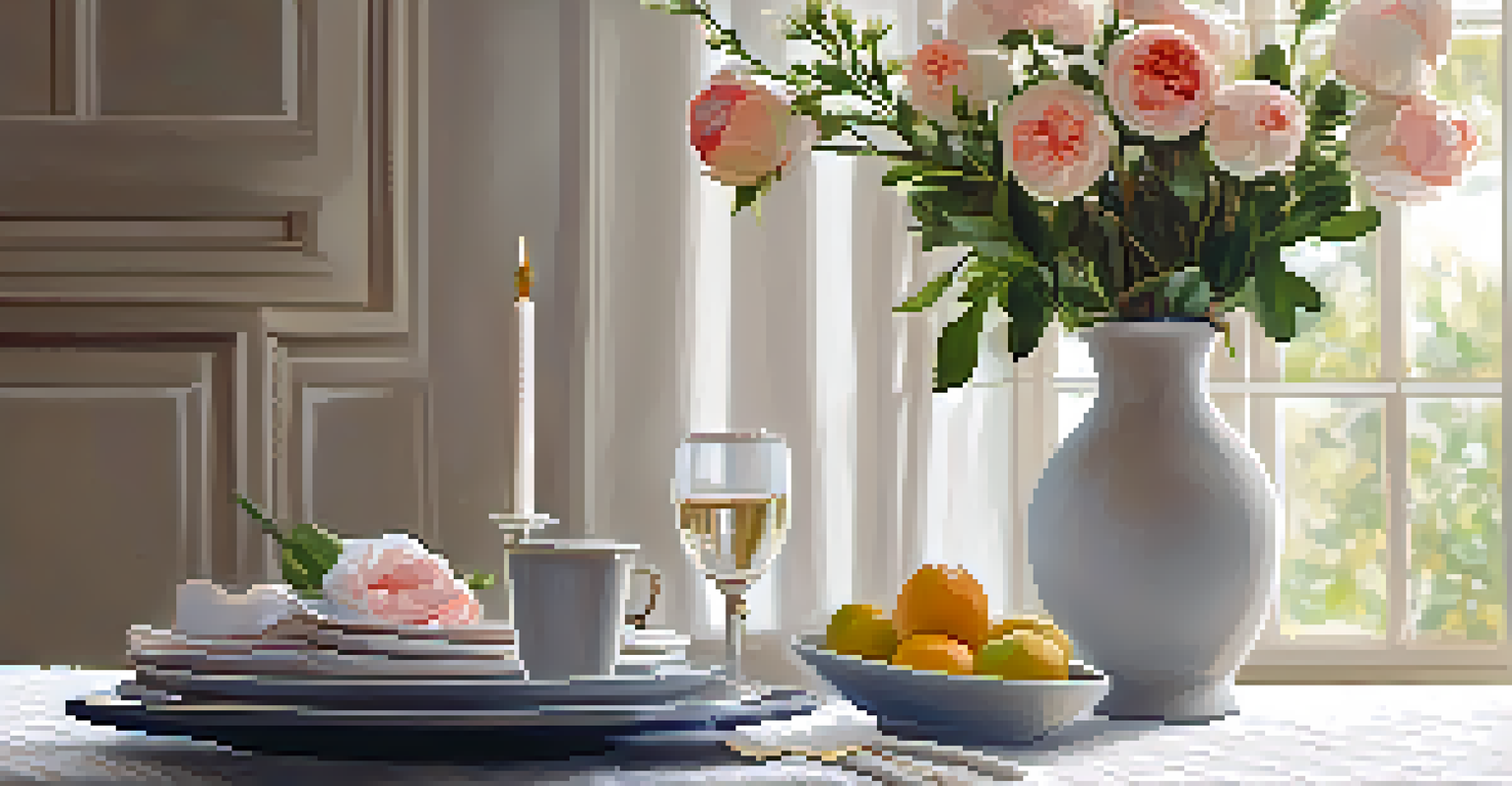Sewing for Home: Creating Custom Home Decor Items

Why Sewing for Home Decor is a Great Idea
Sewing your own home decor items can be a rewarding and creative outlet. It allows you to express your personal style and make your living space truly unique. Instead of relying on mass-produced items, you can craft pieces that reflect your personality and preferences.
Sewing is not just a craft; it’s a way to express who you are and what you love.
Moreover, sewing can be a cost-effective way to refresh your home. With just a bit of fabric and some basic sewing skills, you can create custom pillows, curtains, and table runners that would otherwise cost a fortune in stores. It’s a fantastic way to achieve high-end looks on a budget.
Additionally, sewing for home decor is a sustainable choice. By using leftover fabric or repurposing old textiles, you reduce waste and contribute to a more environmentally friendly lifestyle. This makes your decor not only beautiful but also eco-conscious.
Essential Tools and Materials for Beginners
Before diving into your sewing projects, it’s crucial to gather the right tools and materials. A basic sewing machine, fabric scissors, and pins are essential for any home decor sewing kit. These tools will help you achieve clean edges and secure hems.

You'll also need a selection of fabrics that suit your decor style. Cotton, linen, and canvas are excellent choices for beginners due to their ease of handling. Don’t hesitate to explore different textures and patterns to find what resonates with your vision.
Sewing Personalizes Home Decor
Creating your own decor items allows you to express your personal style and make your living space truly unique.
Lastly, consider investing in a good measuring tape and a cutting mat. Accurate measurements are key to successful sewing, especially when creating items like curtains or cushion covers. Having the right tools will boost your confidence and efficiency as you start your projects.
Choosing the Right Fabrics for Your Projects
Fabric choice can make or break your home decor items. Think about the function of the item: for example, a tablecloth may require a more durable fabric than a decorative pillow. Each fabric has its own properties that will affect how it looks and wears over time.
Creativity is intelligence having fun.
Consider the color palette and patterns that will complement your existing decor. If your home features a lot of neutral tones, a vibrant patterned fabric can add a pop of interest. On the other hand, if your space is already colorful, a solid, muted fabric can help balance the visual chaos.
Don’t forget to feel the fabric! The texture will impact both the aesthetics and the comfort of your items. Whether you prefer soft, cozy materials or crisp, structured fabrics, choosing the right texture can enhance the overall appeal of your home decor.
Basic Sewing Techniques for Home Decor Items
As a beginner, mastering a few basic sewing techniques is essential for creating home decor items. Straight stitching is the foundation of most sewing projects, while techniques like hemming and sewing corners will elevate your work. These skills will give your projects a professional finish.
You might also want to learn about using interfacing for added structure, especially in items like pillow covers or curtains. Interfacing helps fabrics hold their shape and enhances durability, making your creations not only beautiful but also practical.
Essential Tools for Beginners
Gathering the right tools, such as a sewing machine and fabric scissors, is crucial for successful home decor projects.
Lastly, don’t shy away from experimenting! The beauty of sewing lies in the ability to make mistakes and learn from them. Each project, whether it’s a success or a learning experience, will build your skills and confidence.
Creative Projects to Try for Your Home
When it comes to sewing for home decor, the possibilities are endless! Start with simple projects like pillow covers or table runners, which can quickly transform a room. These items not only add color and texture but are also relatively easy to sew, making them perfect for beginners.
As you gain confidence, consider tackling more complex projects like curtains or a fabric wall hanging. These larger items will allow you to showcase your style and creativity on a grander scale. Plus, they can dramatically change the feel of a space.
For those looking to personalize their decor further, think about creating custom fabric art or using fabric to cover furniture. Repurposing old chairs with fresh upholstery can breathe new life into them, making your home feel uniquely yours.
Incorporating Personal Touches into Your Decor
One of the greatest joys of sewing for home decor is the ability to add personal touches. Consider using fabric with meaningful patterns or colors that resonate with you and your family. This could be a fabric that reflects your heritage or one that reminds you of a favorite vacation.
You can also add embellishments like embroidery, appliqué, or even fabric paint to customize your items further. These details can elevate even the simplest of projects, transforming them into cherished pieces that tell a story.
Care for Your Handmade Items
Proper maintenance and cleaning of your handmade decor will extend their lifespan and keep them looking their best.
Don’t forget to involve your family in the process! Creating custom decor can become a fun family activity, allowing everyone to contribute their ideas and preferences. This not only makes the decor more personal but also strengthens family bonds.
Maintaining and Caring for Your Handmade Items
Once you've crafted your beautiful home decor items, it’s important to care for them properly. Different fabrics require different care methods, so always check the label or do a quick online search for washing instructions. This will ensure that your creations last for years to come.
Regular cleaning is essential, especially for items like cushions or tablecloths that may accumulate dust and stains. Consider using a gentle detergent and cold water to preserve the colors and textures of your fabric while keeping them fresh.

Finally, don’t forget to repair any wear and tear promptly. Small issues like loose threads or minor tears can quickly escalate if left unattended. Taking the time to maintain your handmade items will keep them looking their best and extend their lifespan.